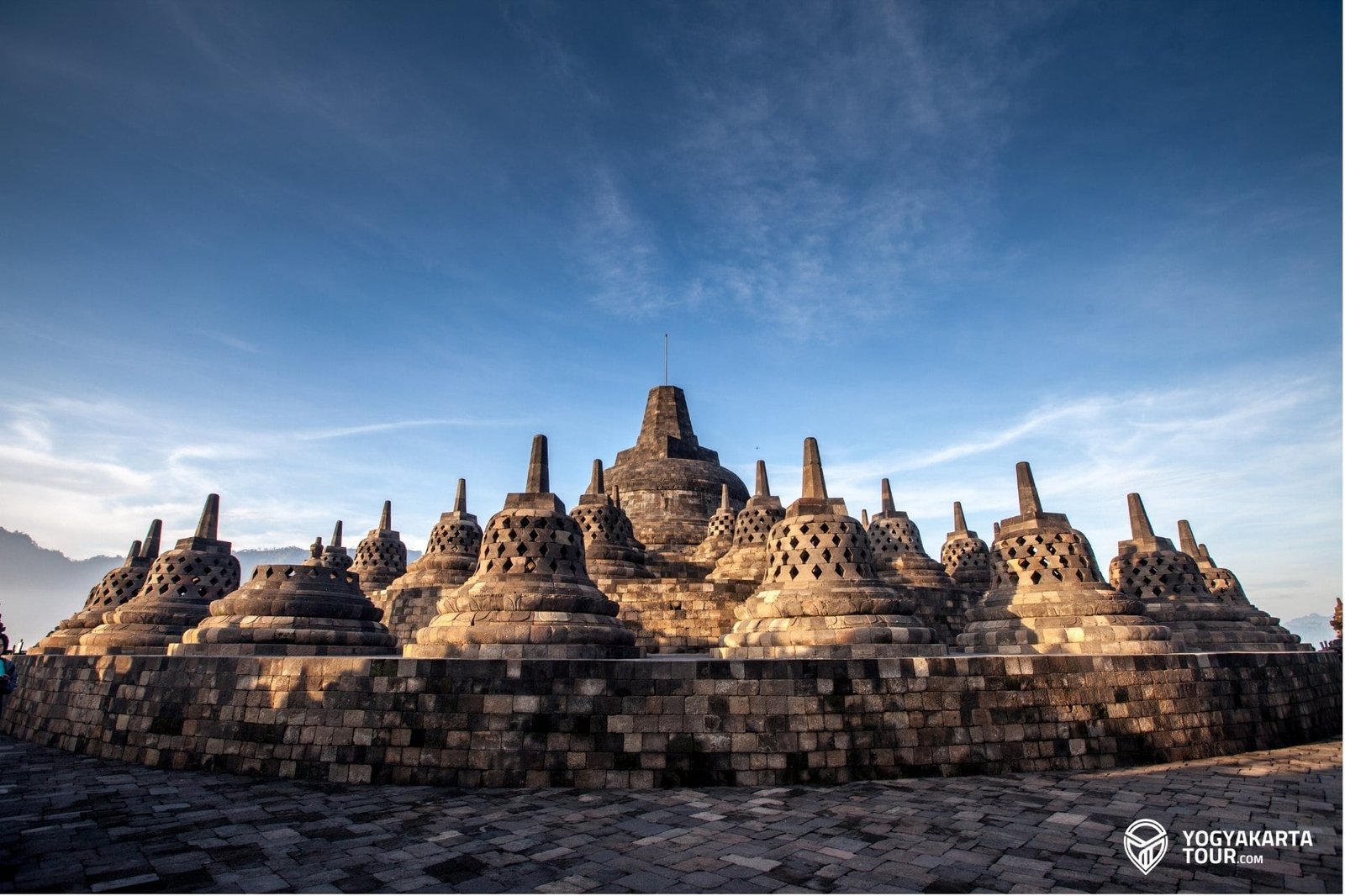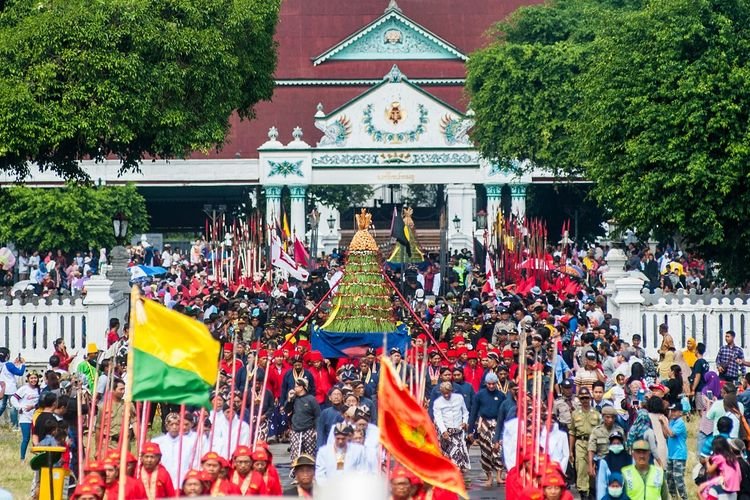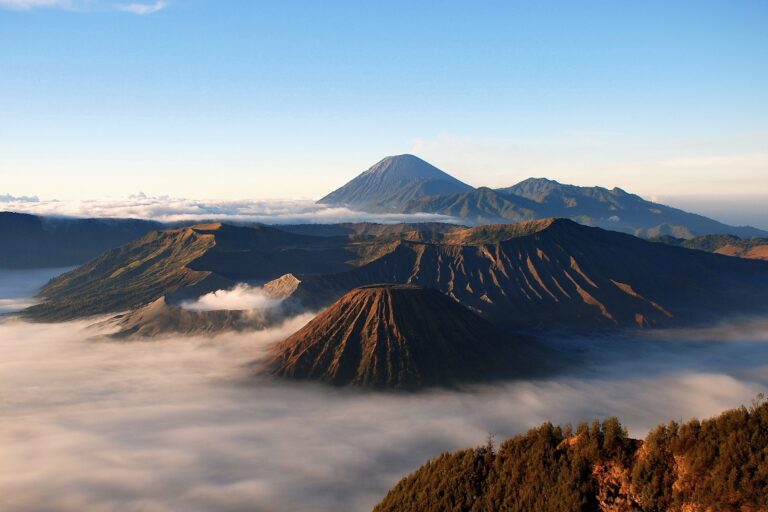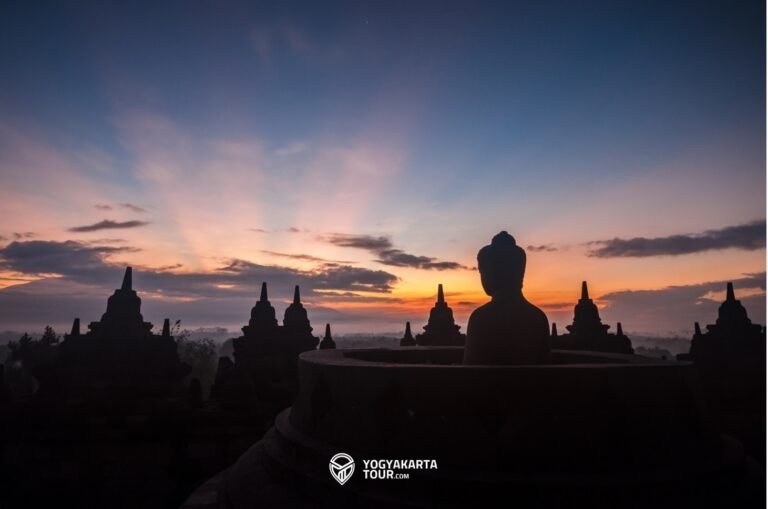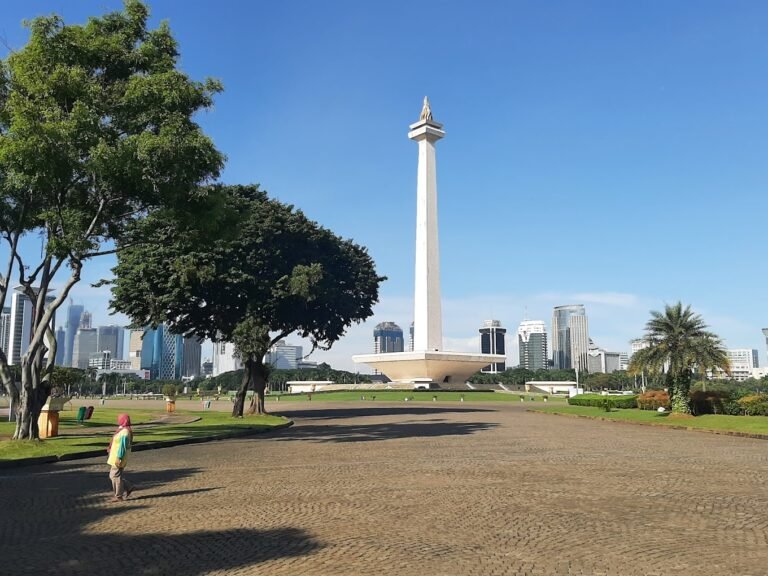If you’re curious about the rich, layered culture of Java, Yogyakarta is a place you simply cannot skip. From centuries-old temples to royal palaces, the city is packed with stories, traditions, and heritage that live on today. In this extended guide, we will explore Borobudur, Prambanan, the Kraton, and Taman Sari in rich detail, from their history and legends to travel tips, practical advice, and even visitor stories. We’ll also sprinkle in local etiquette so you can feel comfortable and respectful while exploring these incredible sites.
Borobudur: A Wonder of the Buddhist World
Why is Borobudur so famous?
Borobudur is the largest Buddhist monument in the world, dating back to the 9th century. Its nine stacked platforms, crowned by a massive central stupa, are decorated with more than 2,500 relief panels and 500 Buddha statues. The temple tells the story of the Buddhist path to enlightenment in stunning stone carvings.
Most visitors want to see Borobudur at sunrise. The temple, draped in morning mist with the volcanoes of Central Java in the background, is simply magical. Watching the sun slowly paint the stupas golden is an experience you will never forget.
Travel tips for Borobudur:
- Go early for sunrise tickets
- Dress modestly and be respectful
- Take a guide to understand the carvings
- Bring water and a hat because it gets hot later in the day
Local story: Some locals believe Borobudur was abandoned because of Mount Merapi’s eruptions in the 10th century, adding an air of mystery to its rediscovery.
How to get there?
About 40 kilometers from Yogyakarta city, you can get there by private car, bus, or a guided tour for stress-free travel.
Prambanan: A Hindu Masterpiece
What makes Prambanan so special?
Prambanan, a UNESCO World Heritage site, is Indonesia’s largest Hindu temple complex, built around the same time as Borobudur. The towering 47-meter central temple is dedicated to Shiva, while smaller temples surround it to honor Vishnu and Brahma. Together they tell the great stories of Hindu mythology.
The Ramayana reliefs carved on the temple walls come to life during the Ramayana Ballet, performed on an open-air stage with the temples lit beautifully in the background. Seeing the dance, fire, and music against the majestic spires is a highlight for many visitors.
Travel tips for Prambanan:
- Visit in the late afternoon for cooler weather
- Check the Ramayana Ballet schedule
- Hire a local guide for fascinating legends
Visitor experience: Many travelers are surprised by the peaceful gardens around Prambanan, making it a wonderful place to relax after exploring the main temples.
How to get there?
About 17 kilometers from Yogyakarta, easy to reach by car, Trans Jogja bus, or a guided tour.
The Kraton: Heart of Yogyakarta’s Royal Tradition
What is the Kraton?
The Kraton, or Sultan’s Palace, is the center of Javanese royal culture. Built in 1755, it remains the residence of the Sultan of Yogyakarta and is still actively used for ceremonies and cultural performances. The palace is laid out in perfect harmony based on traditional Javanese cosmic principles.
What can you see inside?
You can explore museum halls with royal heirlooms, see gamelan instruments, keris daggers, and even attend daily cultural shows featuring traditional dance or puppet shows.
Travel tips for the Kraton:
- Arrive early, around 8 am, before it gets busy
- Respect dress codes; wear modest clothing
- Local guides help explain Javanese philosophy hidden in the palace layout
Local etiquette: Don’t point your feet at anyone or raise your voice inside the Kraton—calm and respectful behavior is valued.
How to get there?
Right in the heart of Yogyakarta, easy to reach by becak, motorbike, or a short walk from Malioboro.
Taman Sari: The Royal Water Castle
What is Taman Sari?
Built in the mid-18th century, Taman Sari was a royal retreat for the sultans of Yogyakarta. It had pleasure pools, meditation chambers, gardens, and secret tunnels. The sultan and his family came here to escape palace routines and enjoy leisure time.
Highlights at Taman Sari:
- The main bathing complex with its photogenic towers
- The Sumur Gumuling underground mosque
- The hidden water tunnels
Travel tips for Taman Sari:
- Go with a guide to learn the hidden stories
- Bring cash for entry and donations
- Wear comfortable shoes because the area has uneven stones
Visitor experience: Photographers will love the arches, old doors, and pastel colors of Taman Sari. It’s a favorite Instagram spot!
How to get there?
Near the Kraton, only about 10 minutes by becak or motorbike.
✨ Practical Tips for Exploring Culture in Jogja
- Timing: Early morning is best to avoid heat and crowds
- Dress code: Cover shoulders and knees when visiting sacred sites
- Respect: Javanese people value soft-spoken, polite visitors
- Language: Basic phrases like “monggo” (please) and “maturnuwun” (thank you) go a long way
- Tickets: Have cash ready, and check if there are local holidays or ceremonies that affect opening hours
Final Thoughts from Yogyakarta Tour Team
These four cultural wonders are just the beginning of your Jogja adventure. Each place has layers of meaning, traditions, and legends that a local guide can bring to life. If you want an authentic, worry-free journey, our team at Yogyakarta tour is here to help with friendly guides, transportation, and custom itineraries so you can explore comfortably.

